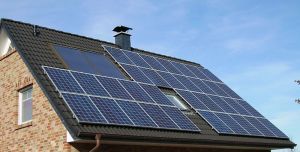 Back in December I wrote about an article that appeared in the local paper touting how small power generation facilities, primarily solar, had increased 58% in the last year or so. Today’s Caledonian Record contains an article that further concretizes some of the issues I raised in that initial post.
Back in December I wrote about an article that appeared in the local paper touting how small power generation facilities, primarily solar, had increased 58% in the last year or so. Today’s Caledonian Record contains an article that further concretizes some of the issues I raised in that initial post.
The trustees of the Lyndonville Electric Department (LED) were recently briefed by the Manager, Ken Mason, on the prospect of several large, 500kW, solar farms being built in the area by Green Lantern Development, a company based out of Waterbury, VT. A representative of the company, Sam Carlson, met recently with representatives of Lyndon State College and Lyndon Institute on the prospect of their building solar farms and taking part in Vermont’s net metering program. Carlson also hopes to meet soon with people from Q Burke about this as well. All three of these organizations are large scale customers of LED.
As I pointed out in December, because of Vermont’s net metering rules, especially in conjunction with the mandates that larger and larger percentages of electricity come from “renewables,” utilities have to buy electricity from such projects, up to 15% of their peak load. Today’s article states the same:
Lyndonville Electric would be required to purchase the power generated by the solar farms at a price higher than its typical wholesale costs under Vermont’s net metering regulations.
…
Ken Mason told trustees that if a customer chooses to build a net metering site, “It’s not something where we have any choice.” Referring to the net metering program, Mason added, “utilities are obligated to take this whether we like it or not.”
Just how much a higher price would LED have to pay? Again, from today’s article:
Lyndonville Electric buys wholesale power under numerous agreements with a wide variety of power producers, including, for example, from Hydro-Quebec right now for 7.5 cents [per kWh]. LED sells it for about 14 cents. Under the latest net metering rules, though, LED would be requried to purchase the net metered solar energy at 19 cents per kwh. LED would thus pay more to buy power from the net metered solar farm than it charges to sell that power to a customer.
So for every unit of electricity LED must buy from a net metering customer, they will take a 27% loss and the more they have to buy, the more they will lose. As anyone in business knows, you cannot sell products for less than you have to pay for them and stay in business for any length of time, especially with a loss on the scale we see here. If the amount you sell at a loss is relatively small or only for a limited time, it might be sustainable. However, with the new net metering rules that state a utility must accept net metering up to 15% of their peak load, large solar farms could “end up getting more credit for net metering than the customers pay for electricity.”
What impact might this have on the utility?
Mason says three large solar arrays, that generated more power than the customers used, could hand Lyndonville Electric a net loss of around $275,000 to $300,000 in revenues
Not only would the utility suffer a net loss, but the utility and other power users would be on the hook to pay for all the fixed costs incurred by the net metering customer. This is in addition to the generally higher electricity rates, about 35% above the national average, that customers pay and the taxes that are required to fund the “financial incentives” paid by the state to those who construct solar farms.
Tell me again how, with government subsidies and mandated higher prices, solar is ready to compete in the market with fossil fuels?

Great posts!
Thanks for reading and taking the time to comment. It is greatly appreciated.
Pingback: Environmentalists' Anti-Human Bias - Order From Chaos